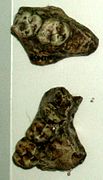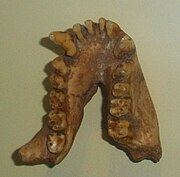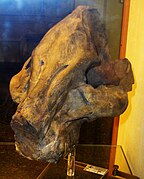Astaracian
The Astaracian age is a period of
During the Late Orleanian and Astaracian (17 to 10.7 Ma), oscillating sea levels resulted in a succession of palaeogeographic changes in the Eastern
During the Late Orleanian,
A second wave from Africa in the Early Astaracian, MN 6 (15 to 13.5 Ma), included the hominoid
A third wave during MN 7/8 (13.5 to 10.7 Ma) probably took place, but the late Astaracian is poorly documented. A seaway most likely joined the Paratethys and the Mediterranean, preventing migrations. The hominoid Dryopithecus appeared in Europe 12.5 Ma together with the Asian suid Propotamochoerus. The rodent genus Cricetulodon is known from Western and Central Europe from MN 3 and from the end of MN 7/8 in Turkey and Greece.[2]
References







